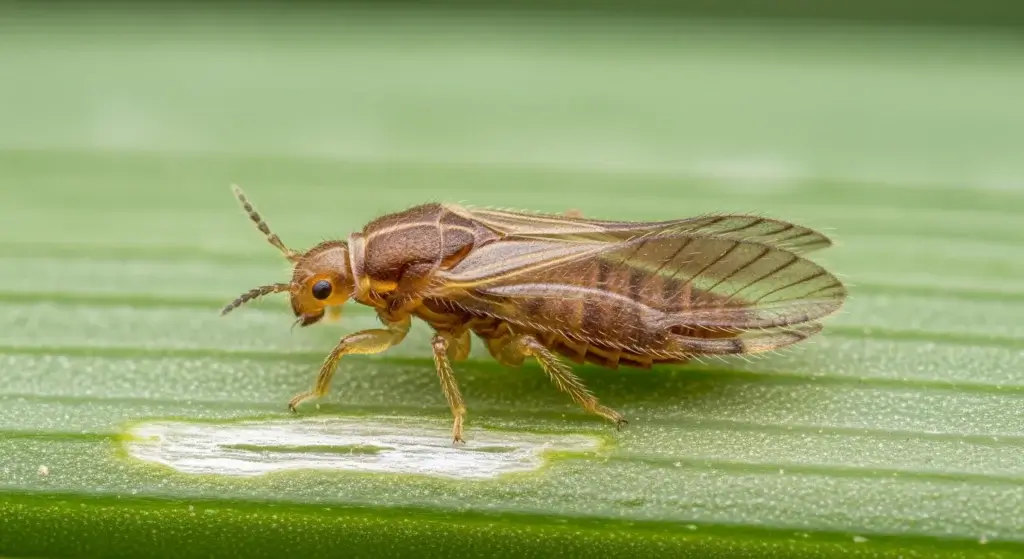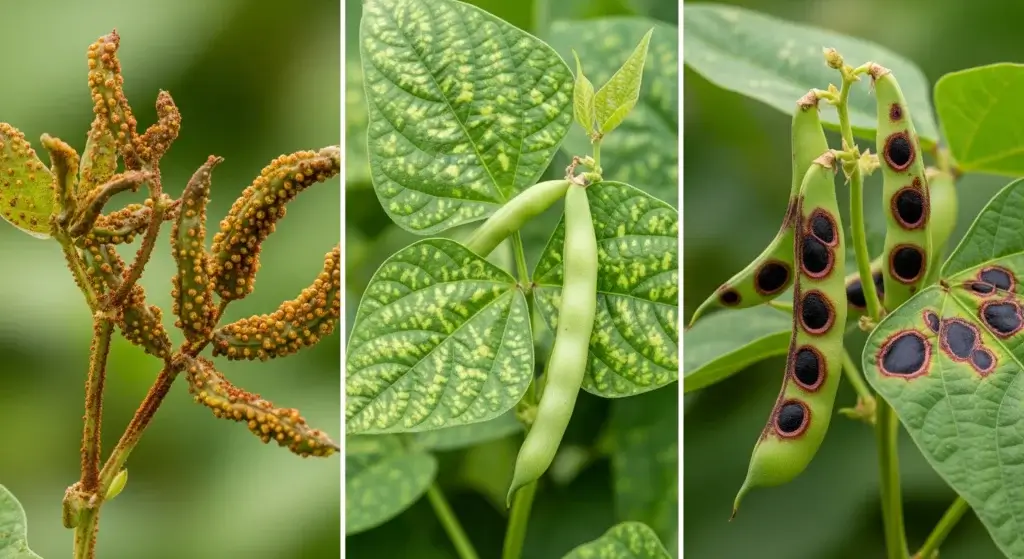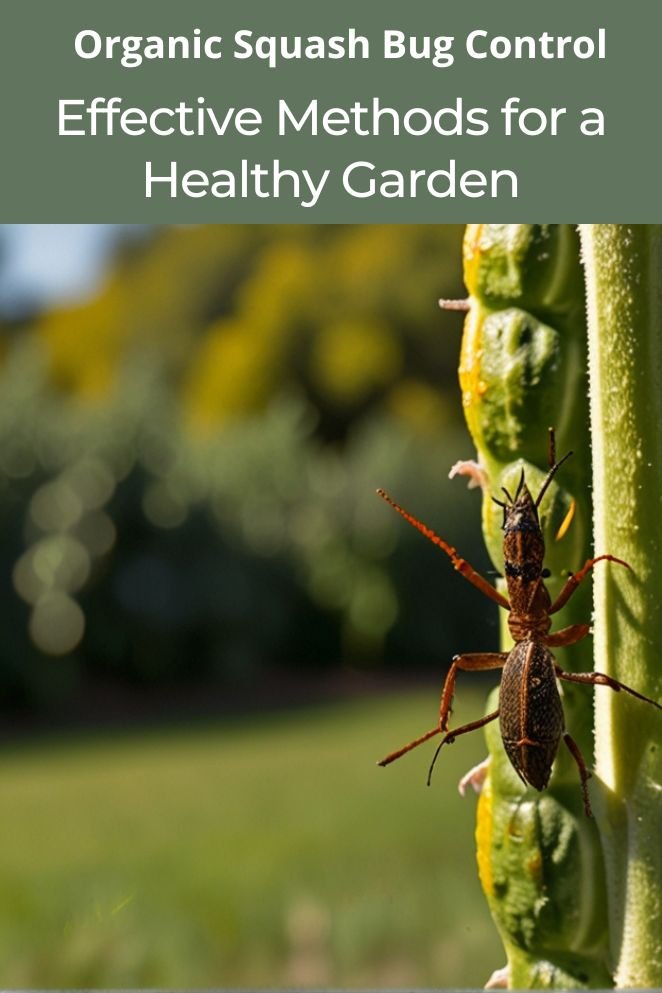
Squash bugs are a significant pest of squash and other cucurbit crops, causing damage to the plants and reducing yields.
These insects are attracted to the sweet, sticky sap of the plants and feed on it, causing the leaves to become yellow and curled.
If left unchecked, squash bugs can lead to the death of the plant.
In this article, we will explore organic strategies for controlling squash bugs, including prevention methods and control techniques.
Squash Bugs Damage on Plants
Squash bugs might seem tiny, but their effect on plants can be quite profound.
Let’s explore how their feeding habits can cause significant damage:
Feeding on plant sap
Squash bugs have a hearty appetite for plant sap, which they extract by puncturing the leaves and stems.
This feeding behavior disrupts the natural flow of nutrients within the plant, triggering a chain of negative consequences.
- Read also: Outsmarting the Enemy: Tips on How to Deter Cabbage Moths
- Read also: Pest Damage on Vegetables: A Guide to Identification and Control
Yellowing and curling leaves
As squash bugs siphon off the plant’s sap, the leaves often show signs of distress.
You might notice them turning yellow and curling up, indicating that the plant is struggling to cope with the loss of vital nutrients.
Stunted growth
With its nutrient supply compromised, the affected plant may struggle to grow as vigorously as usual.
Growth might slow down, with new leaves and stems failing to develop properly.
In severe cases, growth might halt altogether, hampering the plant’s ability to thrive.
Reduced yield
One of the most concerning outcomes of squash bug infestations is the impact on crop yield.
As plants battle to maintain their health amid ongoing sap loss, their capacity to produce fruits or vegetables diminishes.
This drop in yield not only affects the plant’s overall productivity but also translates to lower harvests for farmers and gardeners.
Weakened plant
Beyond the visible signs of damage, squash bug infestations can weaken plants, making them more vulnerable to other threats like disease and environmental stressors.
Weakened plants are less resilient and may struggle to fend off secondary issues, exacerbating the harm caused by squash bugs.

Organic Prevention Strategies
Protecting your garden from squash bugs is crucial to ensure your plants thrive.
Here are some natural methods you can implement:
Row covers
Row covers act as a shield for your plants, guarding them against squash bugs.
Placing these covers over your squash plants, particularly when they’re young and vulnerable, forms a barrier that prevents adult squash bugs from reaching them.
It’s akin to tucking your plants under a cozy blanket, shielding them from unwanted pests.
Crop rotation
Crop rotation offers a refreshing change for your garden, disrupting the routines of squash bugs.
By relocating your squash plants to different areas each year, you thwart the bugs’ attempts to settle in one place.
This natural strategy helps regulate squash bug populations and promotes a harmonious ecosystem within your garden.
Companion planting
Imagine creating a community of plants that support each other.
Herbs and flowers like nasturtiums and marigolds emit scents that repel squash bugs.
By planting these aromatic allies around your squash, you establish a fragrant barrier that deters pests.
It’s like inviting friendly neighbors to keep watch over your garden.
Attractive trap crops
Trap crops serve as decoys, diverting squash bugs away from your main squash crop.
By planting enticing varieties such as pumpkins nearby, you entice the pests to feast on these sacrificial plants instead.
It’s akin to offering them a delicious distraction, ensuring your precious squash plants remain unharmed.
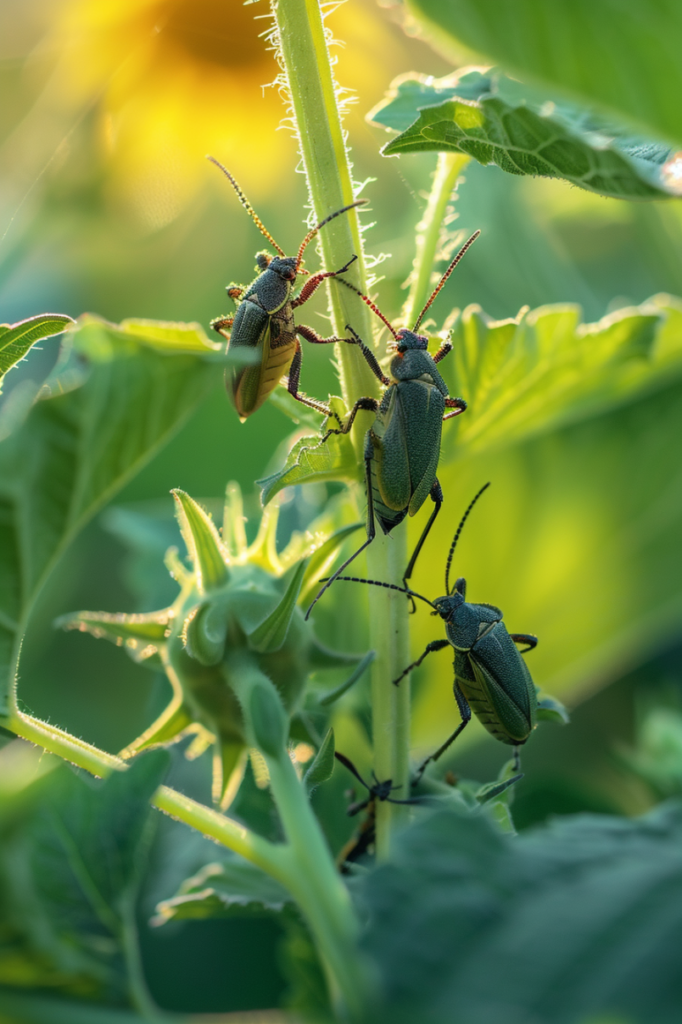
Organic Control Methods
Encountering squash bugs in your garden can be a bit discouraging, but there are some natural methods to handle them effectively:
Handpicking
Picture yourself as a garden detective, carefully inspecting your plants and removing any squash bug eggs or nymphs you find.
This hands-on approach is simple yet surprisingly effective, especially if you catch the infestation early.
It’s like giving your plants a personal, bug-free spa treatment.
Insecticidal soap sprays
Imagine giving your plants a gentle, spa-like cleanse with insecticidal soap sprays.
These solutions, made from fatty acids, delicately dissolve the squash bugs’ tough exoskeletons, leaving them dehydrated and unable to survive.
Regular application of these sprays ensures your plants stay squeaky clean and free from unwanted pests.
Diatomaceous Earth (DE)
Think of diatomaceous earth as nature’s own bug-fighting superhero.
Made from fossilized aquatic organisms, it acts like tiny shards of glass to pierce the exoskeletons of squash bugs, causing them to dry out and perish.
Applying DE around your plants creates a protective barrier, keeping squash bugs at bay without harming other garden inhabitants.
Neem oil spray
Neem oil is like a secret weapon against squash bugs.
Derived from neem tree seeds, it disrupts the bugs’ life cycle by interfering with their feeding and reproduction.
Regularly spraying your plants with neem oil not only controls existing squash bug populations but also prevents new ones from taking hold.
It’s like giving your plants a protective shield against unwanted invaders.

Additional Tips and Tricks
In addition to the strategies mentioned earlier, here are some extra tips and tricks to keep squash bugs in check:
Encourage beneficial insects
Imagine inviting helpful allies to your garden party.
Beneficial insects like ladybugs and lacewings are natural predators of squash bugs.
By creating a welcoming environment for these beneficial insects through diverse plantings and minimal pesticide use, you can harness their appetite for squash bugs and reduce their population naturally.
Maintain a healthy garden
Think of your garden as a thriving ecosystem where balance is key.
By prioritizing soil health and adopting proper watering practices, you create an environment that’s less hospitable to squash bugs.
Healthy, well-nourished plants are more resilient to pest attacks, making it harder for squash bugs to take hold and cause damage.
Remove weeds and debris
Picture giving your garden a tidy makeover.
Removing weeds and debris from your garden not only enhances its appearance but also eliminates potential hiding spots and breeding grounds for squash bugs.
By keeping your garden clean and clutter-free, you reduce the likelihood of squash bug infestations and promote a healthier growing environment for your plants.
Trap and monitor
Set up traps to catch squash bugs and monitor their activity in your garden.
You can create simple traps using boards or newspapers placed near your squash plants.
Check these traps regularly and remove any captured squash bugs to prevent them from causing further damage.
Monitoring squash bug populations allows you to take timely action and prevent infestations from getting out of hand.
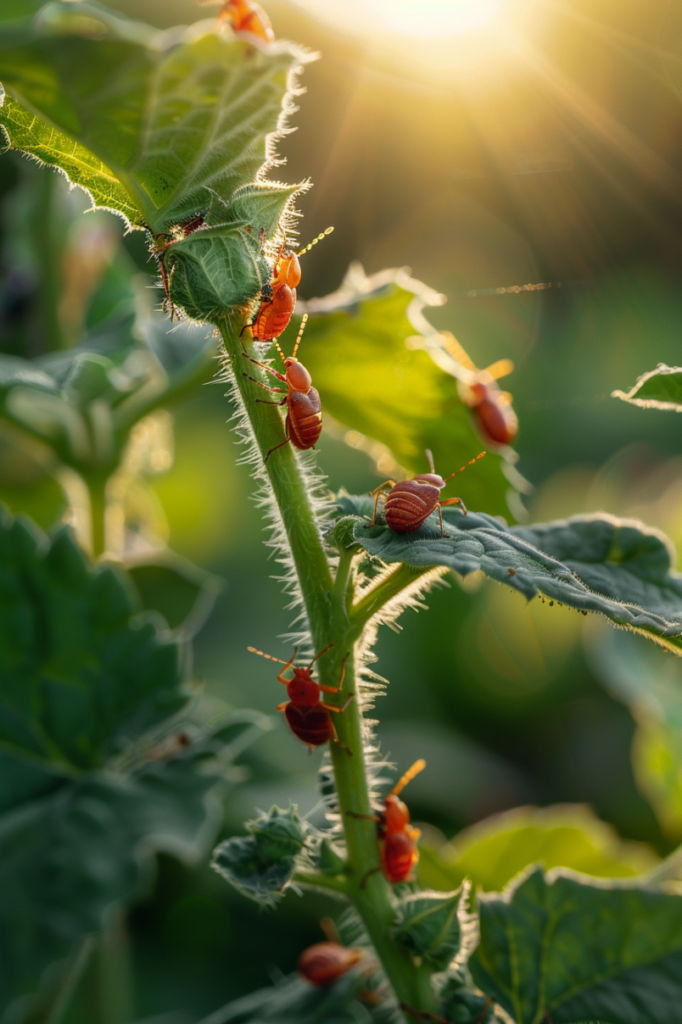
- Read also: The Hidden Threat: Unveiling the Caterpillar Damage to Plants
- Read also: Guarding the Blooms: Preventing Rhododendron Diseases
Conclusion
Squash bugs are a significant pest of squash and other cucurbit crops, causing damage to the plants and reducing yields.
However, by using organic prevention strategies and control methods, you can effectively control squash bugs and maintain a healthy and productive garden.
Remember to always follow the instructions on any pesticides or other chemicals you use, and to take steps to maintain a healthy and balanced ecosystem in your garden.
FAQs
The best ways to prevent squash bugs from infesting your garden include using row covers, crop rotation, companion planting, and attractive trap crops.
If squash bugs do infest your garden, you can control them using handpicking, insecticidal soap sprays, diatomaceous earth, and neem oil spray.
Yes, there are several natural predators of squash bugs, including ladybugs and lacewings. By attracting these insects to your garden, you can encourage them to feed on the squash bugs and help control the population.
To maintain a healthy garden that is less susceptible to pest damage, you should focus on creating a balanced ecosystem by using organic gardening practices, maintaining healthy soil, and providing proper watering and sunlight for your plants.

